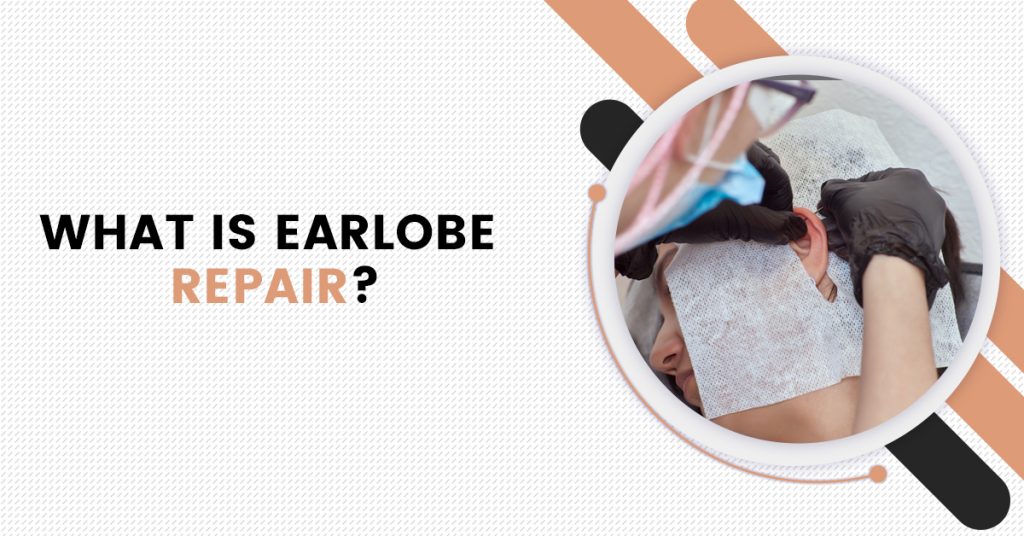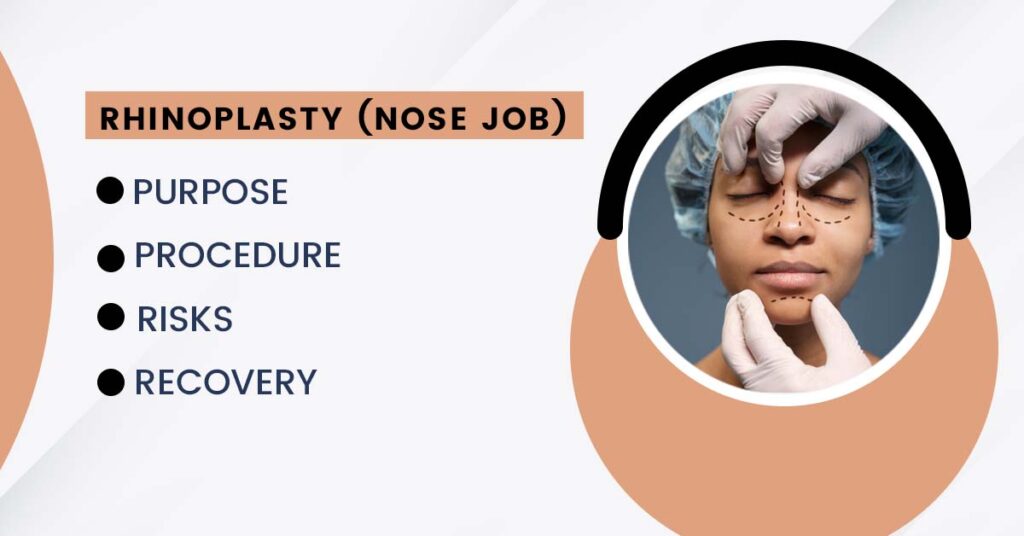A common kind of cosmetic surgery called breast augmentation involves using fat transfer or breast implants to alter the size and contour of your breasts. It’s crucial to discuss with your surgeon which kind of breast implant and surgical technique will be ideal for you because there are various options.
What is Breast Augmentation?
Breast augmentation is a surgical procedure aimed at increasing the size and enhancing the shape of a person’s breasts. This is commonly achieved through the insertion of implants, which can be filled with saline or silicone gel, or by fat transfer.
The goal of breast augmentation is to achieve a fuller and more proportionate bustline, addressing factors such as breast size, symmetry, and overall contour. It is often chosen for cosmetic reasons, but it can also be part of reconstructive surgery following breast cancer treatment or other medical conditions.
Types of Breast Augmentation
There are several types of breast augmentation procedures, primarily differing in the choice of implants and surgical techniques. Here are some common types:
1.Implant Types:
● Silicone Implants: These implants are filled with silicone gel and are known for their natural feel and appearance.
● Saline Implants: Filled with sterile saline solution, these implants are adjustable and have a firmer feel than silicone implants.
● Structured Implants: These implants have an internal structure to maintain their shape and feel more natural.
2.Surgical Techniques:
● Submuscular Location: The implants are positioned below the muscles of the chest.
● Subglandular Placement: The implants are positioned between the chest muscles and the breast tissue.
● Dual-Plane Placement: Combines aspects of both submuscular and subglandular placement for a middle ground approach.
3.Incision Locations:
● Inframammary Incision: The incision is made along the crease under the breast.
● Periareolar Incision: The incision is made around the edge of the areola.
● Transaxillary Incision: The underarm is where the incision is made.
● Transumbilical Incision: Also known as TUBA, the incision is made near the belly button, and the implants are placed using an endoscope.
4.Composite Breast Augmentation: This involves combining implants with fat transfer to achieve a more natural look and feel.
5.Breast Augmentation with Lift (Mastopexy): Combines breast augmentation with a breast lift to address sagging and enhance overall breast appearance.
6.Reconstructive Breast Augmentation: Involves breast augmentation as part of breast reconstruction following mastectomy or other breast-related surgeries.
You Can also read:- Everything You Need to Know About Hair Loss
Reasons for Breast Augmentation
Breast augmentation is typically pursued for the following reasons:
● Cosmetic Enhancement: Desire for increased breast size or improved breast shape for aesthetic reasons.
● Enhanced Self-Esteem: Seeking a boost in confidence and self-image through a more proportionate or fuller bustline.
● Reconstruction after Surgery: Restoring breast volume and shape after mastectomy or other breast-related surgeries, such as those related to breast cancer treatment.
● Correction of Asymmetry: Addressing natural breast size or shape discrepancies to achieve symmetry.
● Changes due to Pregnancy or Weight Loss: Counteracting changes in breast appearance caused by pregnancy, breastfeeding, or significant weight loss.
● Improvement of Body Proportions: Enhancing overall body proportions and balance for a more symmetrical and harmonious look.
● Restoring Breast Volume with Aging: Counteracting the natural loss of breast volume and firmness that can occur with aging.
Procedure Details
At the event that you decide to undergo breast augmentation surgery, it will probably be performed at an outpatient surgical centre or a comparable setting. People can typically return home the same day as the procedure.
You won’t feel any discomfort throughout the surgery because it will probably be done under general anaesthesia. In the 24 hours leading up to your procedure, do as your surgeon instructs.
One of three types of incisions will be used to place your breast implants:
● Inframammary (under the breast)
● Axillary (under the armpit)
● Periareolar (tissue around the nipples)
After separating the breast tissue from your chest muscles and tissue, your surgeon will create a pocket. These pockets will be filled with implants and centered inside your breasts.
If you have chosen saline implants, after the shell has been safely inserted, the surgeon will fill the implants with sterile saline solution. They will be filled if you select silicone.
Following a successful implant placement, your surgeon will suture your wounds and use surgical glue and tape to firmly wrap them. After the anaesthesia wears off sufficiently, you will be watched in recovery and then allowed to return home.
You can also read:- Indian Celebrities Hair Transplant: Bollywood Stars Who Underwent Hair Transplant
Prepare for Breast Augmentation Surgery
You must adhere to your surgeon’s preoperative instructions in order to get ready for your treatment. The night before your surgery, you’ll usually be told not to eat or drink anything starting at midnight.
Your surgeon will recommend that you quit smoking in the weeks leading up to your breast augmentation. Smoking limits blood flow throughout the body and increases your risk of problems. This may make recovery from surgery take longer. Additionally, smoking may reduce immunity, which increases the likelihood that you may become infected.
What happens during breast augmentation surgery?
During breast augmentation surgery, the following steps typically occur:
● Anesthesia: You will be administered either general anesthesia or intravenous sedation to ensure you are comfortable and pain-free throughout the procedure.
● Incision Placement: The surgeon will make incisions in predetermined locations, such as in the inframammary fold, around the areola, in the armpit, or near the belly button, depending on the chosen technique.
● Creation of a Pocket: A pocket is created either beneath the chest muscle (submuscular) or behind the breast tissue but in front of the muscle (subglandular), where the implant will be placed.
● Implant Placement: The selected implants (saline, silicone, or structured) are inserted into the pockets. The surgeon adjusts the position to achieve the desired symmetry and appearance.
● Closure of Incisions: The incisions are meticulously closed using sutures, skin adhesive, or surgical tape.
● Recovery and Monitoring: You will be monitored as you awaken from anesthesia. Once stable, you may be allowed to return home on the same day, or in some cases, a short hospital stay may be recommended.
● Postoperative Care: Follow your surgeon’s postoperative care instructions, which may include wearing a supportive bra, taking prescribed medications, and avoiding strenuous activities.
What happens after breast augmentation?
After breast augmentation, patients typically experience some swelling and discomfort, which can be managed with prescribed pain medications. It’s common to wear a supportive bra during the initial recovery period. The majority of people can return to light activities after a few days, but they should refrain from intense exertion for a few weeks.
Follow-up appointments with the surgeon are scheduled to monitor healing progress. Over time, swelling subsides, and the final results become more apparent. Patients are advised to adhere to postoperative care instructions, including regular self-examinations and routine mammograms.
The emotional and physical adjustments to the new breast size and shape vary among individuals, and ongoing communication with the surgeon is crucial for a successful and satisfying outcome.
Risks & Benefits
Risks of Breast Augmentation:
● Infection: Bacterial infection at the site of incision:
● Hematoma: Collection of blood outside blood vessels, leading to swelling and pain.
● Seroma: Accumulation of fluid around the implant, causing discomfort.
● Capsular Contracture: Formation of a thick scar tissue around the implant, potentially causing firmness or shape changes.
● Implant Rupture or Leakage: Silicone or saline implants may rupture or leak, requiring surgical intervention.
● Implant Displacement or Malposition: Shifting or misplacement of the implants.
● Scarring: Formation of noticeable scars at the incision sites.
Benefits of Breast Augmentation:
● Enhanced Aesthetic Appearance: Achieving desired breast size and shape.
● Improved Confidence: Boosting self-esteem and body image.
● Clothing Fit: Enhancing the fit of clothing and swimwear.
● Reconstruction: Restoring breast volume after mastectomy or trauma.
● Correction of Asymmetry: Achieving a more symmetrical breast appearance.
● Long-Term Results: Long-lasting results that contribute to improved quality of life.
● Customization: Various implant types, sizes, and surgical techniques allow for personalized outcomes.
● Emotional Well-Being: Positive impact on emotional well-being and self-perception.
Recovery for Breast Augmentation
● Immediate Post-Op: Monitoring in the recovery area before being cleared to go home on the same day or after a short hospital stay.
● Initial Days: Mild to moderate discomfort, swelling, and bruising are common. Prescription pain medication may be provided.
● Supportive Bra: Wearing a supportive bra to aid in healing and reduce swelling.
● Rest and Limited Activity: Avoiding strenuous activities for several weeks, with initial restrictions on lifting and reaching.
● Follow-Up Appointments: Attending scheduled follow-up appointments with the surgeon to monitor healing and address any concerns.
● Return to Work: Returning to light activities and work within a few days, depending on individual recovery.
● Exercise Resumption: Gradual reintroduction of exercise, typically after a few weeks, following surgeon’s approval.
● Swelling Subsides: Swelling gradually diminishes over several weeks, revealing more natural-looking results.
● Scarring Management: Following scar care instructions to minimize the appearance of incision scars.
● Emotional Adjustment: Allowing time for emotional adjustment to the new breast size and shape.
Why Choose Dr. Jagdeep Rao for Breast Augmentation?
Selecting a surgeon for breast augmentation is a critical decision, and Dr. Jagdeep Rao stands out for several compelling reasons. With a wealth of experience and a proven track record in plastic surgery, Dr. Rao combines technical expertise with a commitment to patient satisfaction.
Known for his meticulous approach and attention to detail, he takes the time to understand each patient’s unique goals and concerns, ensuring a personalized treatment plan.
Dr. Jagdeep Rao stays abreast of the latest advancements in breast augmentation techniques, offering a range of options such as different implant types, incision placements, and surgical approaches. Patients appreciate his dedication to open communication, thorough preoperative consultations, and comprehensive postoperative care.
Choosing Dr. Jagdeep Rao for breast augmentation means entrusting your journey to a skilled and compassionate surgeon committed to achieving beautiful and natural-looking results while prioritizing patient safety and well-being throughout the entire process.







